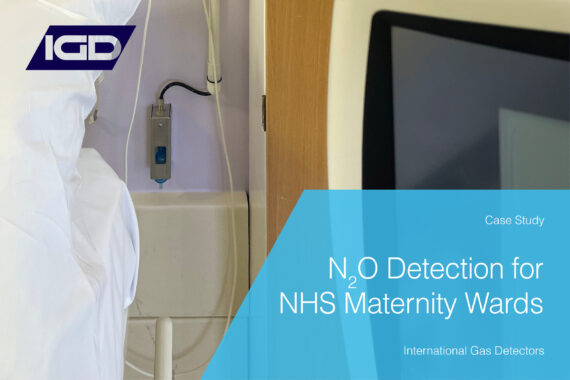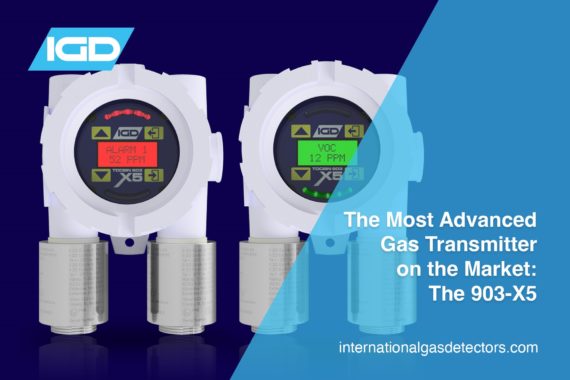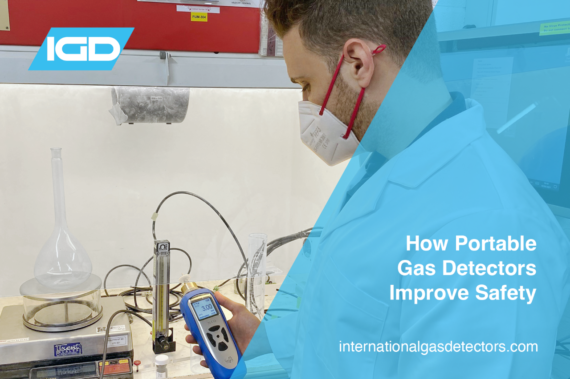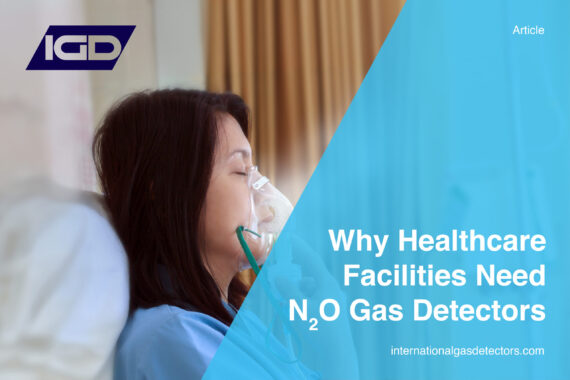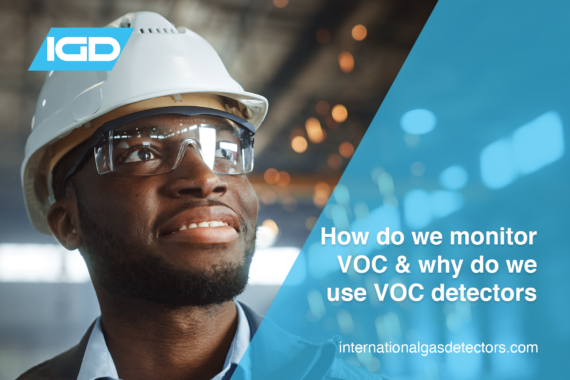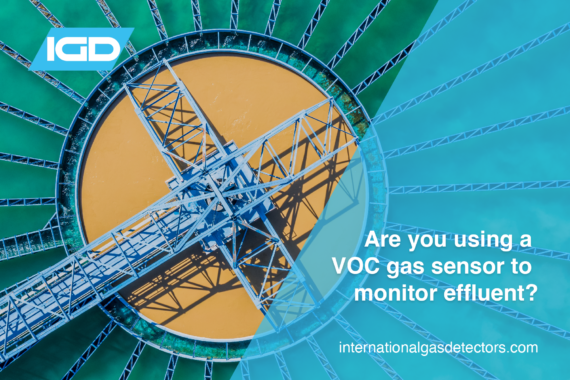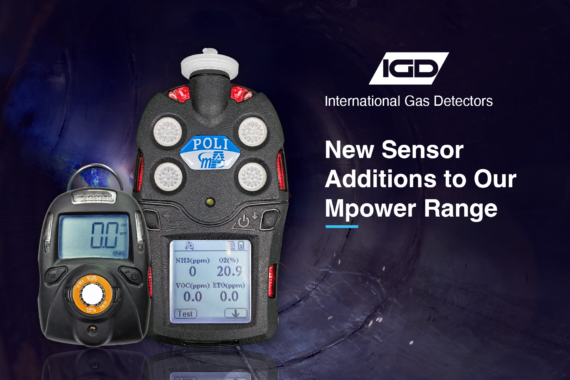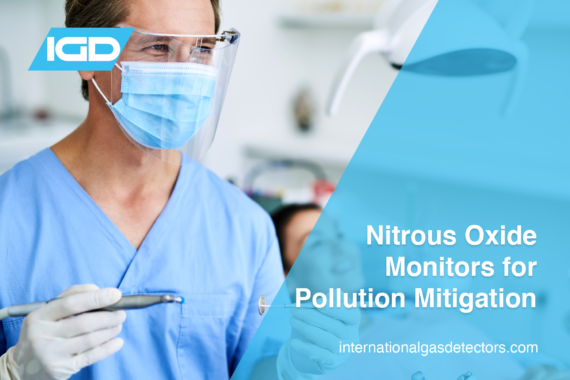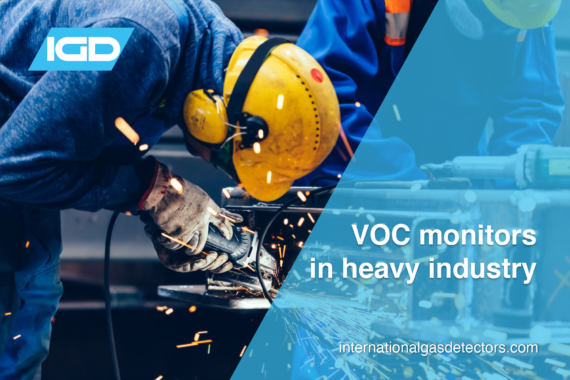IGD recently provided detectably better N2O gas detectors to the NHS. Issues of high-level N2O leakage across the service led to concern among safety management, especially due to its prevalence across the NHS. They were looking for a reliable and high-quality N2O gas detector solution to prevent these leaks and found that IGD was best suited to provide this. Read below to find out more about this project.
The Most Advanced Gas Transmitter on the Market: The 903-X5
International Gas Detectors Ltd are excited to announce the latest addition to our product range: the TOC-903-X5 gas transmitter. This brand-new gas detector transmitter provides a huge leap in technology to the gas detection market, with its dual gas sensing capabilities and onboard connectivity. Backed by our 100 years of experience in gas detection technology, you can be sure that you are getting the most advanced gas transmitter on the market with full-service support from the experts in gas detection technology.
How Portable Gas Detectors Improve Safety
Portable gas detectors play a vital role in industry and research by protecting personnel from unpredictable gas hazards as they move from place to place. In this article, we’re looking at why portable gas detectors are often an essential part of any gas detection strategy.
Why Healthcare Facilities Need Nitrous Oxide Gas Detectors
N2O is very common in the healthcare industry, used for a wide range of different reasons and being one of the most utilised gases in this industry. It is important to understand what this gas is and where it is used, along with what it is used for to understand why and where you need a nitrous oxide gas detector. It is also vital to understand the dangers of N2O, especially if working in the healthcare industry, as there are common misconceptions to just how dangerous this gas can be. This article delves into all of these things as well as the best available nitrous oxide gas detector solution to keep personnel safe. Read on to find out more.
How Do We Monitor VOCs and Why Do We Use VOC Detectors?
VOC’s are extremely common and can be from surprising sources. Each VOC comes with its own exposure hazards and reasons these need to be monitored, these can be found by accessing each materials Material Safety Data Sheet (MSDS). But how are these monitored? And why do we monitor these gases? These questions will be answered in this article to help provide a basic understanding of VOC gases and the dangers.
Portable Detection for the Firefighting Industry
It is vital to have adequate detection for the hazards you are encountering. Due to the range of gases it is possible to encounter, there is an equating number of portable gas detectors to be utilised in this application. This includes handheld multi gas detectors such as the POLI and MGT as well as handheld VOC monitors like the NEO. Read on to find out more about the hazards of firefighting and IGDs detectably better solutions.
Are You Using a VOC Gas Sensor to Monitor Effluent?
Handling and treating effluent presents a wide range of hazards, from confined spaces to the treatment processes. Effluent, wastewater and water treatment also ranges across a wide range of industries, expanding the encounterable hazards significantly. One of these hazards commonly encountered involves VOC gases. These compounds can present a wide range of issues; thus, a VOC gas sensor is extremely useful in this industry. Read on to find out more about the VOCs encountered when monitoring effluent, the hazards and the VOC gas sensor solution on offer.
New Sensor Additions to our MPower Range
IGD are proud to announce that we are further extending the sensor range in the Mpower portable products. Our partnership with Mpower and the new sensor additions, now extend our portfolio of portable
detection into various industries sectors that we couldn’t before.
Implementing a Nitrous Oxide Monitor for Pollution Mitigation
The recent COP 26 summit in Glasgow made a large amount of promises in regard to pollution management. One of the main focuses of this summit was the mitigation of climate change, including the reduction of N2O gas emissions. Implementing a nitrous oxide monitors is proven to be the most effective way to reduce your N2O emissions, but why do I need to do this? And what is the most suitable, detectably better device for my application? Read on below for the best advice from our team of experts.
VOC Issues in Heavy Industry and How VOC Monitors Can Help
Exposure to harmful volatile organic compounds (VOCs) can cause a variety of acute and chronic health problems. Since VOCs are produced in especially high concentrations in heavy industry, it’s essential for the safety and wellbeing of personnel that reliable and accurate VOC monitors are installed in these environments. In this post, we take a look at what VOCs are, the risks they pose in heavy industry, and how VOC monitors can help minimize these risks.

